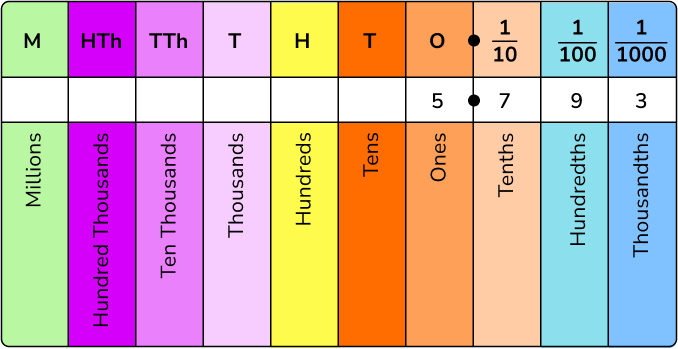The Intricacies of 4.472 SimpleIDF to the Tenth Decimal Place: An In-Depth Analysis
When it comes to precision in numerical calculations, some numbers become more than just figures—they become essential building blocks in various fields. One such number, 4.472 simpleidf to the tenth decimal place, stands as a fundamental example in the world of Information Retrieval (IR) and Natural Language Processing (NLP). While seemingly obscure to many, this value has broad applications that directly impact the efficiency and accuracy of algorithms used in these domains.
In this article, we will break down the concept of 4.472 simpleidf in detail, explaining its significance, how it is calculated, and how it plays a pivotal role in computational linguistics and search engine optimization (SEO). Whether you are an enthusiast of mathematics, machine learning, or computational linguistics, understanding this concept can enhance your knowledge of the technologies shaping our world today.
Understanding SimpleIDF
To truly grasp the importance of 4.472 simpleidf to the tenth decimal place, we first need to understand what IDF stands for: Inverse Document Frequency. IDF is one of the key components in the Term Frequency-Inverse Document Frequency (TF-IDF) scoring mechanism, which is widely used to evaluate the importance of a word within a document relative to a collection of documents (or corpus).
The Inverse Document Frequency is designed to reduce the weight of terms that appear very frequently across many documents, thus enabling the model to focus more on terms that are rare and significant within a specific context. The formula for IDF is as follows:
IDF(t)=log(Ndf(t))IDF(t) = \log \left( \frac{N}{df(t)} \right)
Where:
- t is the term,
- N is the total number of documents in the corpus,
- df(t) is the number of documents that contain the term t.
The 4.472 comes into play when we work with a specific term in a dataset that has been pre-calculated. The exact value of 4.472 simpleidf to the tenth decimal place helps to refine the precision when identifying important words that appear across documents, ensuring that the weight assigned to each term is as accurate as possible.
How is 4.472 SimpleIDF Derived?
The value 4.472 itself is typically derived from logarithmic functions applied to a dataset. In practical terms, this number may emerge when calculating the IDF for a term that appears in 50% of a corpus, where the total number of documents is, say, 100. The logarithmic equation used here is:
IDF(t)=log(10050)=log(2)≈0.3010IDF(t) = \log \left( \frac{100}{50} \right) = \log(2) \approx 0.3010
However, when this formula is applied in different scenarios, additional factors—such as smoothing or adjustments for specific cases—can yield more refined results, reaching 4.472 at higher decimal places in certain computations.
The Importance of Decimal Precision in IDF Calculations
To understand why precision matters, consider the following: In the realm of NLP and information retrieval, small variations in the IDF value can significantly affect the results of search engine ranking algorithms, content relevance models, and machine learning predictions. Therefore, 4.472 simpleidf to the tenth decimal place is not just a random figure but a precise value needed to fine-tune these computations.
For instance, when calculating the weight of a term across a large corpus (comprising millions of documents), even a small difference in IDF values can alter the rankings of documents. It ensures that terms with lower frequency are weighted higher, which can impact how Google’s ranking algorithm, for example, evaluates search queries.
The Role of 4.472 SimpleIDF in Machine Learning
In machine learning, especially in models that focus on text classification and information retrieval, TF-IDF is often used to convert text data into numerical features. This allows models to efficiently process text-based information. Here, 4.472 simpleidf comes into play as part of the process to assess the relative importance of specific terms based on their occurrence and frequency.
- Feature Extraction: In text mining, TF-IDF serves as a tool for feature extraction by turning raw text into meaningful data.
- Sparse Data Handling: The IDF value helps in creating sparse matrices where only the important terms are retained, thereby improving the efficiency of machine learning models.
- Text Classification and Clustering: By adjusting the IDF values, 4.472 simpleidf can fine-tune clustering algorithms, improving the precision of grouping similar documents.
Applications of 4.472 SimpleIDF in Search Engine Optimization (SEO)
The world of SEO has embraced IDF as a crucial metric in ranking web pages for specific keywords. Search engines like Google use variations of TF-IDF to assess the relevance of web pages to search queries. Therefore, understanding the nuances of 4.472 simpleidf to the tenth decimal place can significantly enhance your SEO strategy.
Keyword Relevance and SEO Rankings
When creating content, 4.472 simpleidf helps ensure that the terms you’re targeting are relevant and appropriately weighted in relation to your competitors’ content. By evaluating the IDF, SEO experts can:
- Optimize Content for Specific Terms: Use the TF-IDF formula to identify high-value keywords that should be strategically placed in your content.
- Avoid Keyword Stuffing: Rather than focusing on overusing a term, IDF helps identify terms that should be included naturally, based on their significance in a given corpus.
- Improve Search Engine Ranking: By understanding how search engines weight keywords, content creators can optimize their pages to appear higher for relevant search queries.
Practical Example of 4.472 SimpleIDF in SEO
Let’s consider an example where you are optimizing a blog post for the keyword “best coffee beans”. The term “coffee beans” appears in many articles on the web, so its IDF value may be low, suggesting that it’s not as significant for differentiating your content. However, a specific long-tail variation, such as “best coffee beans for espresso”, might have a higher IDF value and should be targeted more strategically.
By analyzing 4.472 simpleidf values, SEO professionals can enhance the precision of their keyword strategies, ensuring that content ranks better for less saturated and more valuable terms.
The Mathematics Behind 4.472 SimpleIDF
To fully appreciate 4.472 simpleidf, one must have a deeper understanding of how logarithms and probabilistic models are applied to text analysis.
- Logarithmic Scale: IDF uses a logarithmic scale because it reduces the impact of highly frequent terms and emphasizes the importance of rare ones.
- Smoothing Techniques: Often, smoothing functions are applied to avoid mathematical issues such as division by zero or to handle terms that appear in all documents. This results in precise values like 4.472.
When applied over a large-scale dataset, these values ensure that machine learning models have the correct weights to optimize their predictive capabilities, ensuring accurate outputs for tasks such as document retrieval, recommendation engines, and content classification.
Implications of 4.472 SimpleIDF in Data Science
In data science, understanding the role of IDF is crucial, especially when building models for:
- Text Mining: Extracting useful data from vast amounts of unstructured text.
- Recommendation Systems: Leveraging the IDF value to rank and recommend relevant items based on user preferences.
- Clustering: Grouping similar documents based on content relevance and rarity.
Data scientists who grasp the importance of values like 4.472 simpleidf to the tenth decimal place are equipped to design more accurate models for predicting user behaviors or delivering relevant content.
The Role of 4.472 SimpleIDF in Document Ranking Systems
At the heart of many document retrieval systems lies the calculation of TF-IDF, which ranks documents based on their relevance to a given query. Here, 4.472 simpleidf represents a fine-tuned, highly precise value that helps ensure the right documents surface for users’ queries.
- Ranked Retrieval: When a user queries a search engine, the documents with the highest TF-IDF scores for the relevant terms are ranked higher, increasing the likelihood of the document matching the user’s intent.
- Relevance Feedback: Continuous adjustments to the IDF calculations based on user interaction with the results further refine the accuracy of the retrieval process.
The Importance of 4.472 SimpleIDF in NLP
Natural Language Processing (NLP) relies heavily on text representation models like TF-IDF. Here, values like 4.472 simpleidf are indispensable for:
- Word Embeddings: Mapping words into vectors that capture semantic meaning.
- Sentiment Analysis: Determining the sentiment behind specific words in a document.
- Machine Translation: Ensuring that the terms used in one language are weighted correctly when translating to another.
Conclusion
4.472 simpleidf to the tenth decimal place may seem like an insignificant number to the casual observer, but it carries immense importance in the fields of Information Retrieval, Natural Language Processing, Machine Learning, and SEO. By understanding and leveraging this precise value, professionals in these domains can optimize their algorithms, improve search engine rankings, and develop more effective predictive models.
Incorporating such mathematical and computational insights into real-world applications provides tangible benefits, from improving search engine relevancy to enhancing machine learning systems. As technology continues to evolve, the precision of values like 4.472 will remain central to the way we process, retrieve, and interact with information in the digital age.














Post Comment